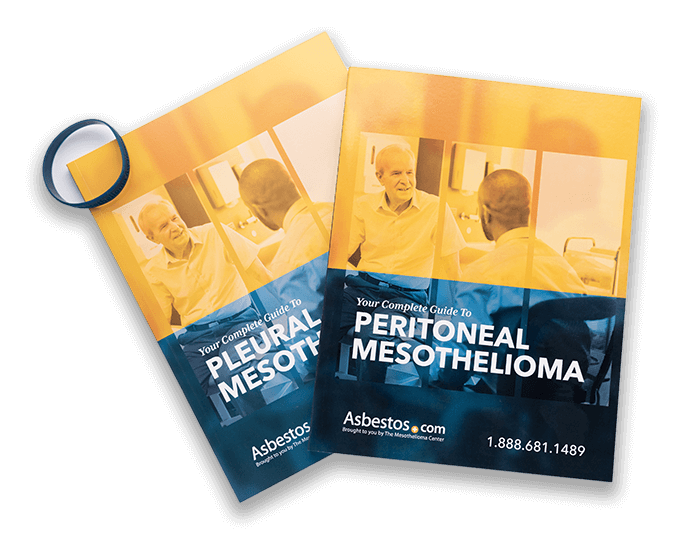Mesothelioma Death Rate
The mesothelioma death rate in the United States is 1 in 100,000. Mesothelioma kills nearly 3,000 Americans each year. Among those with mesothelioma, men die at a higher rate than women. The death rate for men with mesothelioma is about 0.6 per 100,000. The mesothelioma mortality rate for women is 0.2 per 100,000.

Understanding Mesothelioma Death Rate Statistics
Mesothelioma death rates show trends in mortality. They are the number of deaths yearly in a certain number of people. Knowing medical terms helps in understanding death rate stats.
Death rate and mortality rate are 2 terms for the same concept. They both refer to the number of deaths in general or from a precise cause in a specific group of people. Factors include age, asbestos exposure and treatment. These stats highlight the disease’s impact and the need for early intervention.
- Mesothelioma death rates are highest in Oregon, Maine and Minnesota.
- Adults ages 85 and older have the highest death rate of 7.2 per 100,000.
- Asian and Pacific Islanders account for the lowest age-adjusted death rate of 0.2 per 100,000.
Recent global data shows mesothelioma deaths are still high, especially in areas with past asbestos exposure. The World Health Organization reports over 30,000 deaths globally each year. In the U.S., around 2,500 deaths occur annually. Higher rates are seen in older adults exposed to asbestos at work decades ago.
What Is the Mesothelioma Death Rate in the US?
The mesothelioma death rate is 1 in 100,000 in the United States, according to the latest CDC data. A total of 2,236 people died of mesothelioma cancer in the U.S. in 2022, per CDC statistics. Between 2018 and 2022, a total of 11,747 people died of this cancer. These numbers reflect people of all genders, ages, races and ethnicities from all over the country.
Asbestos exposure plays a large role in mesothelioma death rates. Mesothelioma statistics show people exposed to asbestos are more likely to develop and die from mesothelioma. States with the highest asbestos exposure have the highest mesothelioma death rates. This is due to industry or natural deposits.
1 in 100,000
The mesothelioma death rate in the U.S. in 2022, according to the latest data available from the CDC.
Mesothelioma Deaths by State
CDC WONDER data says mesothelioma death rates are highest in Oregon, Maine and Minnesota. Oregon has only 57 deaths but the highest age-adjusted death rate of 1.1 deaths per 100,000 individuals. Maine has the second-highest age-adjusted death rate, at 1.0 per 100,000. It has only 19 reported mesothelioma deaths. California has the highest number of deaths, at 257. But the age-adjusted rate is only 0.6 deaths per 100,000 individuals.
The highest mesothelioma death rates occur in states with known asbestos-related industries. California, Florida, and Maine have shipyards that use asbestos. California and Oregon sit on some of the largest asbestos deposits in the world.
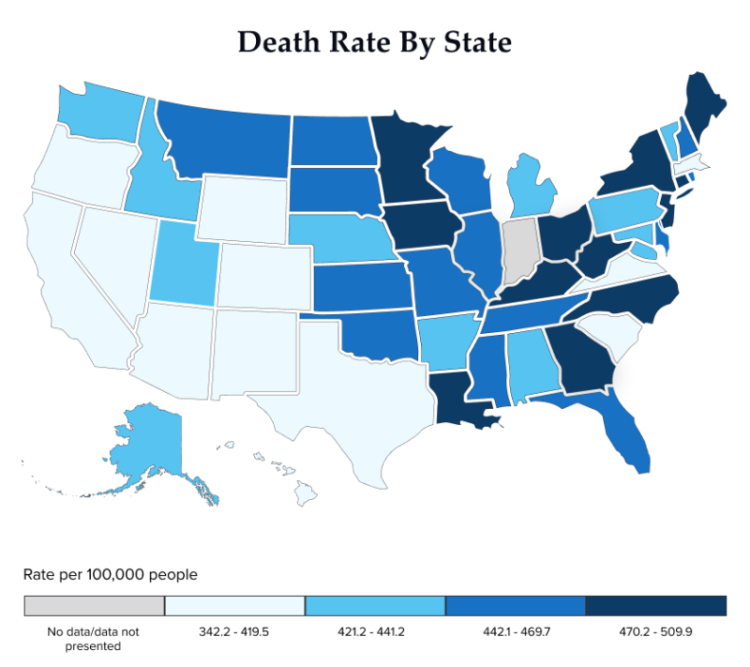
Mesothelioma Death Rates by Demographic
Mesothelioma death rates differ widely among demographic groups. Factors include age, gender, race and job history. Older people, especially those 65 and up, are at greater risk. This is due to the long gap between asbestos exposure and disease onset.
Men are more affected than women. They are more likely to work in high-risk jobs, like construction and shipbuilding. Moreover, where one lives and their economic status also matter. Areas with past asbestos use and poor healthcare access tend to have higher death rates.
Gender
Men have significantly higher death rates from mesothelioma than women. This is likely because men are likelier to work in asbestos-related occupations, including construction, shipbuilding and mining. According to data from the CDC WONDER tool, the age-adjusted death rate of mesothelioma in males in 2020 was 1 per 100,000 individuals.
Data from a recent study found that the annual number of mesothelioma cases in women increased from 489 in 1999 to 614 in 2020. However, age-adjusted calculations per 100,000 women fell from 0.483 to 0.415. These data show women are less than half as likely to die from mesothelioma compared to men.
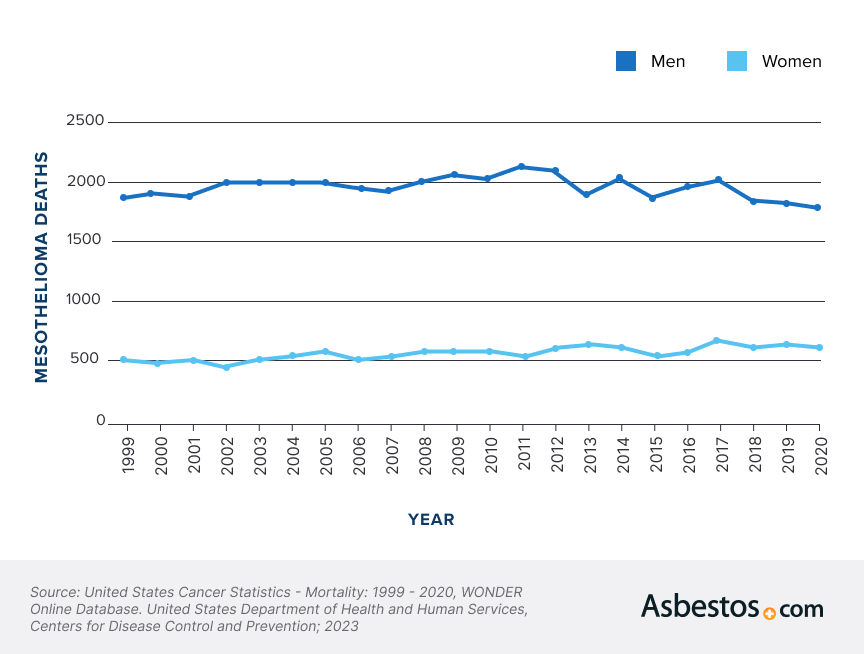
Mesothelioma Death Rates by Age
Mesothelioma death rates are much higher in adults ages 75 and older than those younger than 75. Adults ages 85 and older have the highest crude death rate of 7.2 per 100,000 individuals. Conversely, those ages 45-49 have the lowest crude death rate of 0.1 per 100,000 individuals.
The crude death rate refers to the unadjusted death rate. To compare the same population across age groups, using the crude death rate, not the age-adjusted death rate is more accurate.
Mesothelioma Death Rates Per 100,000 for Ages 35 to 59:
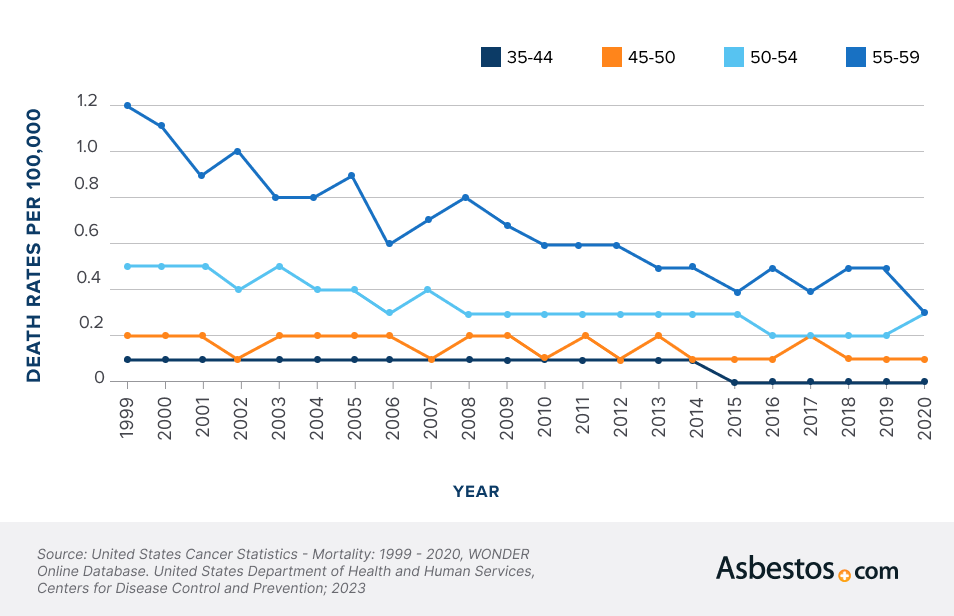
Death Rates Per 100,000 for Ages 60 to 80+:
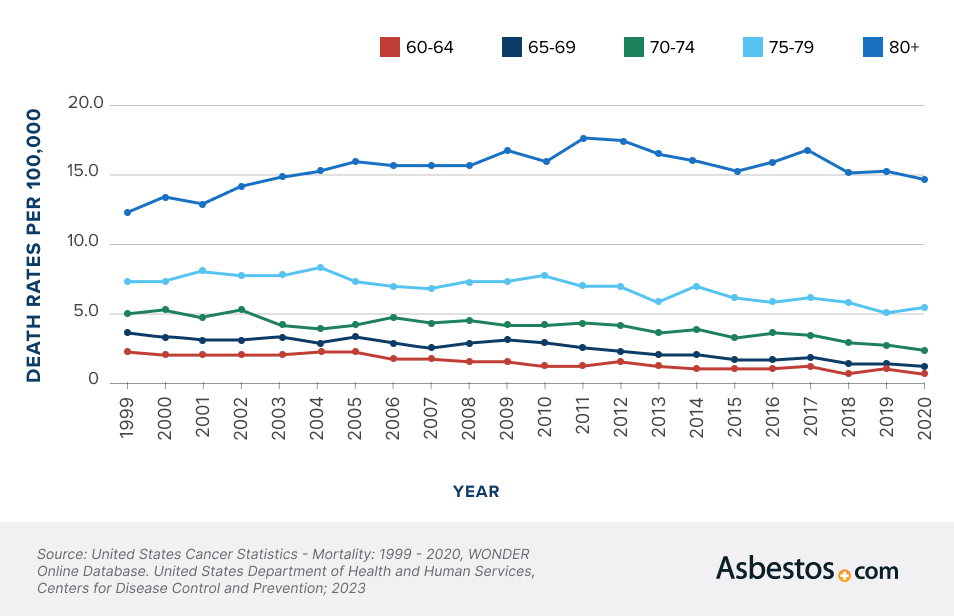
The CDC data show that the older an individual is, the more likely they are to die from mesothelioma. A recent study from South Korea found the latency period for malignant mesothelioma was 33.7 years. This is why many individuals don’t develop mesothelioma until they’re older adults.
Mesothelioma Death Rates by Race and Ethnicity
In 2020, CDC data show that white, non-Hispanic individuals had the highest age-adjusted mesothelioma death rate of 0.7 per 100,000 individuals. This group also accounted for the largest number of deaths, at 2,057. By comparison, Asian and Pacific Islanders accounted for only 41 deaths and an age-adjusted death rate of 0.2 per 100,000 individuals.
Studies also show Black people with mesothelioma have poorer survival rates compared to white and Asian/Pacific Islanders. The 1-year and 5-year survival rates from 2000 to 2019 for Black individuals are 29% and 1%, compared to 33.2% and 2.1% for white individuals.
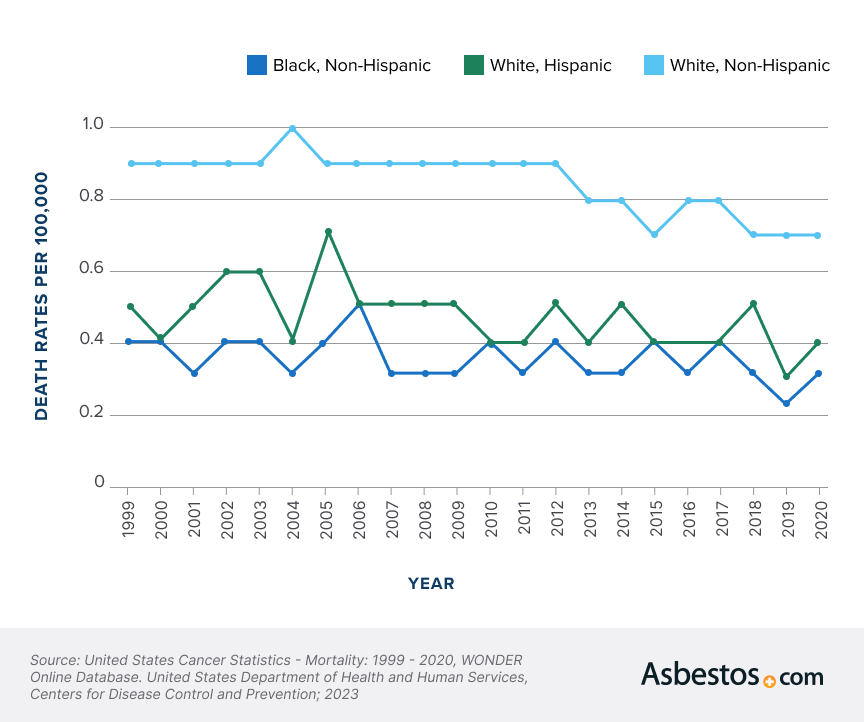
Other Factors Affecting Mesothelioma Mortality
Your overall health and comorbid health conditions can affect mortality rates with mesothelioma. Comorbidities are other health conditions that occur alongside mesothelioma.
- Type of mesothelioma
- Amount of asbestos exposure
- Latency period of mesothelioma
- Innovations in treatments
- Increased awareness of exposure and mesothelioma
People with mesothelioma are more likely to have high blood pressure, diabetes, coronary artery disease and COPD. The CDC states that some of the leading causes of death in the U.S. are heart disease and diabetes. After a mesothelioma diagnosis, it’s vital to treat other health issues. Take care of your overall health.
“This rare cancer has hard numbers that can scare people. But I tell our patients and their families that there is hope. Mesothelioma specialists can help them find it,” said Dr. Snehal Smart, a Patient Advocate at The Mesothelioma Center at Asbestos.com. “They should also use treatments and support groups.”
Mesothelioma Type
Mesothelioma is divided into several types, each with a unique survival rate. The median survival rate with mesothelioma is 1 year. This means that one year after diagnosis, half of individuals with mesothelioma are still alive, and the other half have died. The 5-year survival rate is less than 10%. The mesothelioma stage also affects how long someone may live. This staging may impact the death rate, but the CDC does not track this data.
Malignant peritoneal mesothelioma has a poor prognosis. The median age-adjusted survival rate in studies is 11.6 months. This means only half of people diagnosed with this cancer are alive after 11.6 months. Pericardial mesothelioma is extremely rare and also carries a poor prognosis. On average, people with this cancer type live 6 to 10 months after their diagnosis.
Asbestos Exposure and Latency Period
Mesothelioma develops after a long latency period, typically 20-60 years following asbestos exposure. Many don’t show symptoms until decades after exposure. This latency makes early detection difficult.
The risk of dying from mesothelioma varies by the amount of asbestos exposure. States with a history of heavy industry, like shipbuilding and mining, often have higher rates of asbestos-related deaths. California, New York and Pennsylvania have high asbestos exposure risks.
Improved Mesothelioma Treatments
In recent years, doctors and researchers have developed new and improved mesothelioma treatments. Chemotherapy significantly improves survival rates and progression-free survival. Treatment with combination chemotherapy helps individuals with mesothelioma live an average of 3 months longer.
Mesothelioma is an aggressive cancer, and the treatments for it can be tough. But some patients can live much longer with this treatment. The treatment combines chemotherapy, radiation and surgery. The patients who derive a benefit from this type of tough treatment and who live longer are patients who have a cell type called epithelial type or biphasic type.
Immunotherapy boosts the immune system to fight cancer. Doctors may choose a combination of Opdivo (nivolumab) and Yervoy (ipilimumab) as a first option for treating mesothelioma. Studies have also found Imfinzi (durvalumab) treatment improves mesothelioma survival rates.
Newer treatments, such as tumor treating fields, may also reduce mesothelioma death rates. TTFields use electric fields to stop mesothelioma cells from growing and dividing. The U.S. Food and Drug Administration has approved TTFields for treating malignant pleural mesothelioma.
Mesothelioma and Asbestos Awareness
Awareness of the risks of mesothelioma has risen in recent years. This is especially true for those with previous asbestos exposure. The U.S. has not yet fully banned asbestos, but it placed a federal ban on chrysotile asbestos in March 2024. The hope is that less asbestos exposure will cut mesothelioma cases and deaths.
I think that a lot of things need to be done to increase the awareness about mesothelioma and asbestos. One thing is, I believe, that it should be publicized more, just as the other cancers, such as breast cancer.
Mesothelioma screenings detect early signs of the disease. This allows for timely treatment. Unfortunately, most patients are diagnosed late, which limits options. If you’ve been exposed to asbestos, speak with your doctor. You might qualify for screening.
Common Questions About Mesothelioma Death Rates
- What countries have the highest mesothelioma death rates?
-
Australia, the UK and the US have the highest mesothelioma death rates. They used a lot of asbestos in construction, shipbuilding and manufacturing. Australia has the highest rate. This is due to heavy asbestos use in 20th-century mining and construction. Though bans on asbestos have reduced exposure, deaths still occur. The disease has a long latency period.
- Are there genetic factors that influence mesothelioma mortality?
-
Yes, genetics can play a role in mesothelioma susceptibility. Some people may have a gene that makes them more vulnerable to asbestos fibers. Mutations in the BAP1 gene increase the risk of mesothelioma. Genetics can affect disease risk and progression. But, asbestos exposure is the main cause.
- What can I expect in the final stages of mesothelioma?
-
In advanced mesothelioma, patients face more pain, breathing issues and extreme fatigue. Palliative care is vital for symptom management and comfort. This includes breathing treatments, pain relief and emotional support. As the disease worsens, loved ones may see a big drop in energy, movement and awareness.
- What are some end-of-life decisions mesothelioma patients and loved ones may need to make?
-
End-of-life decisions focus on comfort and quality of life. They involve choosing palliative or hospice care and managing pain. Patients may also opt for “do not resuscitate” (DNR) orders and consider wills. Seeking support is crucial for coping with mesothelioma’s final stages.
This Page Contains 15 Cited Articles
The sources on all content featured in The Mesothelioma Center at Asbestos.com include medical and scientific studies, peer-reviewed studies and other research documents from reputable organizations.
- CDC. (2024, May 2). Leading Causes of Death. Retrieved from https://www.cdc.gov/nchs/fastats/leading-causes-of-death.htm
- EPA. (2024, March 18). Biden-Harris Administration Finalizes Ban on Ongoing Uses of Asbestos to Protect People From Cancer. Retrieved from https://www.epa.gov/newsreleases/biden-harris-administration-finalizes-ban-ongoing-uses-asbestos-protect-people-cancer
- Lan, Y. et al. (2023, November 29). Research Progress on the Mechanism of Anti-Tumor Immune Response Induced by TTFields. Retrieved from https://www.mdpi.com/2072-6694/15/23/5642
- U.S. Cancer Statistics Working Group. (2023, November). U.S. Cancer Statistics Data Visualizations Tool, based on 2022 submission data (1999-2020): U.S. Department of Health and Human Services, Centers for Disease Control and Prevention and National Cancer Institute. Retrieved from https://gis.cdc.gov/Cancer/USCS/?CDC_AA_refVal=https
- Chevallier, M. et al. (2023, July 20). Pleural Mesothelioma in the Era of Immunotherapy. Retrieved from https://journals.sagepub.com/doi/10.1177/11795549231178173
- Deiana, C. et al. (2023, June 21). Improvements in Systemic Therapies for Advanced Malignant Mesothelioma. Retrieved from https://www.mdpi.com/1422-0067/24/13/10415
- Patel, D. et al. (2023, May 31). Demographic and Racial Characteristics, and Survival Trends in Pleural Mesothelioma: A Population Based Study. Retrieved from https://ascopubs.org/doi/10.1200/JCO.2023.41.16_suppl.e20543
- Kurth, L., Mazurek, J.M. & Blackley, D.J. (2023, January 12). Malignant Mesothelioma Among US Medicare Beneficiaries: Incidence, Prevalence and Therapy, 2016–2019. Retrieved from https://oem.bmj.com/content/80/2/86
- Calthorpe, L. et al. (2022, December 30). Contemporary Trends in Malignant Peritoneal Mesothelioma: Incidence and Survival in the United States. Retrieved from https://www.mdpi.com/2072-6694/15/1/229
- Cimen, F. et al. (2022, September 30). Factors Affecting the Life Expectancy in Malignant Pleural Mesothelioma: Our 10 Years of Studies and Experience. Retrieved from https://doi.org/10.1097%2FMD.0000000000030711
- CDC. (2022, August 12). Health, United States, 2020–2021: Age Adjustment. Retrieved from https://www.cdc.gov/nchs/hus/sources-definitions/age-adjustment.htm
- Yan, Y. et al. (2022, May 31). Primary Malignant Pericardial Mesothelioma With a Survival of 2.5 Years: A Case Report. Retrieved from https://tcr.amegroups.org/article/view/64247/html
- Mazurek, J.M., Blackley, D.J. & Weissman, D.N. (2022, May 13). Malignant Mesothelioma Mortality in Women — United States, 1999–2020. Retrieved from https://www.cdc.gov/mmwr/volumes/71/wr/pdfs/mm7119a1-h.pdf
- CDC WONDER. (n.d.) United States and Puerto Rico Cancer Statistics, 1999-2020 Mortality Request. Retrieved from https://wonder.cdc.gov/CancerMort-v2020.html
- National Cancer Institute. (n.d.) Survival Rate. Retrieved from https://www.cancer.gov/publications/dictionaries/cancer-terms/def/survival-rate
-
Current Version
-
January 13, 2025Written ByKaren Selby, RNEdited ByWalter PachecoMedically Reviewed ByJacques Fontaine






